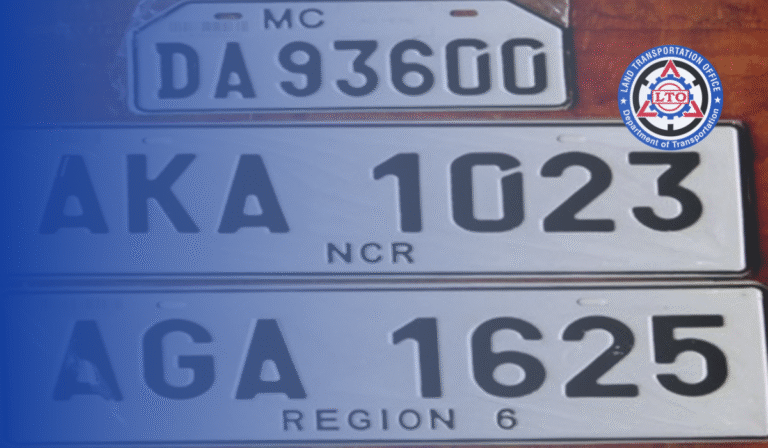List of Road Markings In The Philippines and It’s Meaning
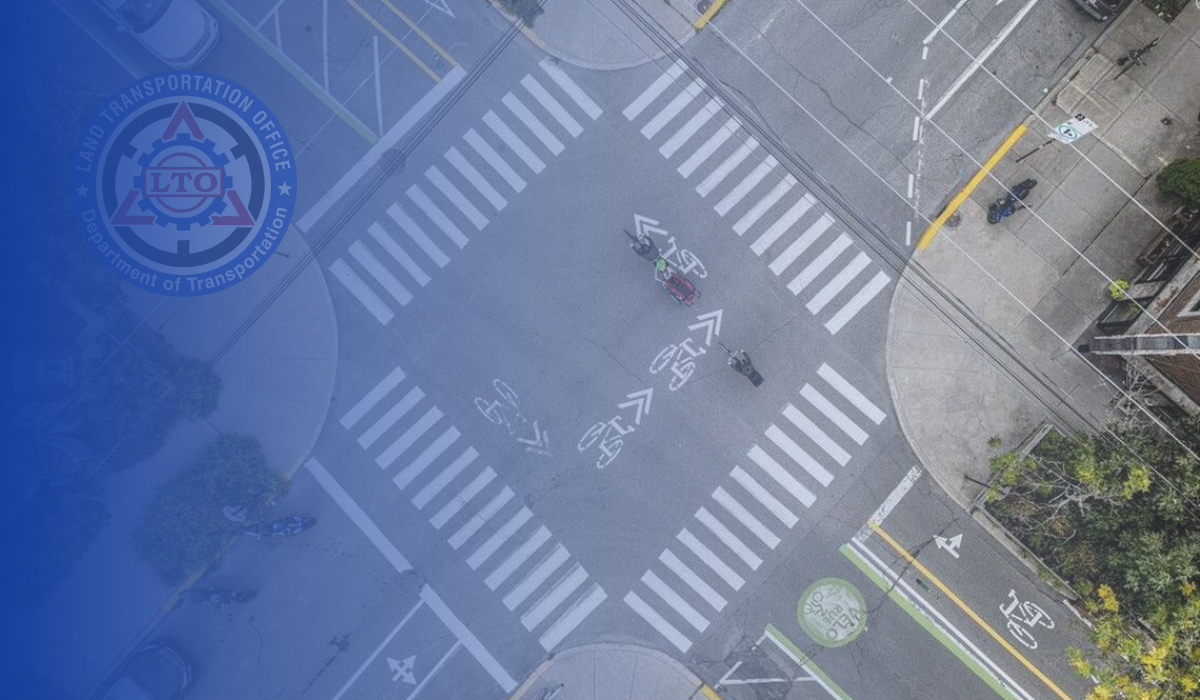
List of Road Markings In The Philippines and It’s Meaning. Traffic markings consist of visual symbols and lines applied to the surface of the road in order to convey important information to drivers and pedestrians regarding lane usage, merging, traffic regulations, and accident prevention. Traffic control devices serve a variety of purposes, such as directing traffic flow, identifying lane divisions, marking pedestrian crossings, signaling hazards, and establishing specific areas, such as lanes for bicycles or buses.
Markings on roads serve a variety of purposes, including conveying meanings, providing clear instructions, and guiding drivers to navigate roads safely, preventing accidents, and complying with traffic laws. The purpose of this article is to provide a comprehensive overview of the common road markings on Philippine roads, as well as their meaning and implications for all users of the roads.
Common Road Markings in the Philippines
Road markings serve as crucial elements of road infrastructure, conveying vital information to both drivers and pedestrians through their placement on the road surface. Utilizing materials such as paint or thermoplastic, these markings come in a variety of colours, shapes, and patterns, each of which conveys its own significance and feature.
There are several types of road markings, including:
Longitudinal Lines (Lane dividers)
The term longitudinal lines refers to markings on the road that follow the direction of traffic flow. The purpose of these lines is to separate lanes, indicate areas where overtaking is prohibited, and to guide drivers safely along the roadway.
Traverse Lines (Intersection markings)
There are a number of pavement markings known as traverse lines that indicate specific areas where vehicles need to stop or yield to other traffic. By enhancing safety and regulating traffic flow at intersections and pedestrian crossings, these markings facilitate orderly movements while improving traffic flow.
Other lines (Special purpose lines)
There are other lines that are associated with pavement markings that have specific purposes other than traffic regulation. It includes markings for parking bays, loading and unloading zones, “Do Not Block” intersection lines, turn lines for vehicles to follow during turns at intersections, and designated lanes for buses and public utility jeepneys (PUJ).
Object Markings (Hazard warnings)
An object marking usually refers to a visual cue or symbol painted on or adjacent to the roadway that signals the presence of objects such as islands, median strips, bridge piers, or other obstructions so drivers can avoid potential hazards.
Raised pavement markings
The raised pavement markings are physical elements on the surface of the road, such as reflective cat’s eyes and rumble strips, which are used to provide tactile and visual feedback to the driver, alerting them to road conditions or potential hazards.
Benefits
Road markings provide the following benefits when they are understood and followed:
- Reduces the risk of vehicular accidents
- All road users are encouraged to drive safely
- Reduces the risk of expensive fines and penalties,
- Reduces the risk of expensive vehicle repairs due to potential damage
List of Road Markings Commonly Used in the Philippines
The following are some of the most common road markings found on Philippine streets, roads, and highways:
White Lines
A white line on the road indicates the boundary between lanes, dividing traffic flow into opposite directions or separating lanes traveling in the same direction, reminding drivers to remain within their lane at all times.
1. Solid White Shoulder Line
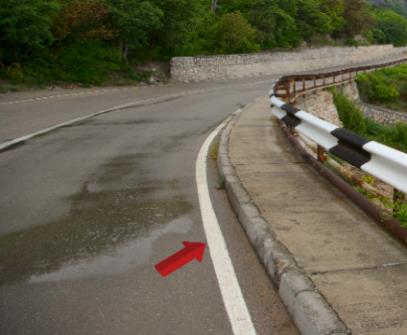
- Meaning: This sign indicates the edge of the roadway, indicating that vehicles should not encroach beyond this line during normal operation.
- Implication: Motorists are advised to remain within the designated roadway and should refrain from entering the area beyond the solid white line.
2. Diagonal White Lines
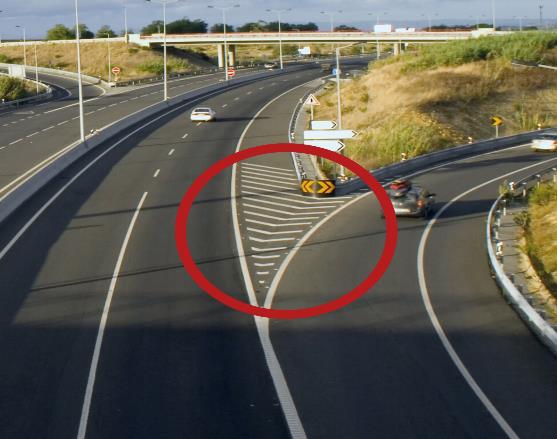
- Meaning: These lines define areas outside the roadway proper that are bordered by solid white lines. It is expected that vehicles will refrain from entering these areas except in cases of emergency.
- Implication: Drivers are advised to avoid occupying spaces marked by diagonal white lines, to maintain a clear path for emergency vehicles, and to maintain smooth traffic flow at all times.
3. Solid White Center Line
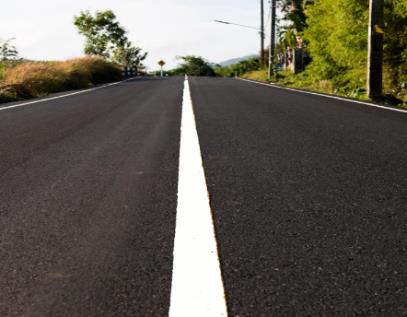
- Meaning: One way traffic is divided on a road with multiple lanes, indicating two separate flows of traffic going in opposite directions.
- Implication: Drivers should avoid overtaking over solid white center lines, and they must maintain their respective lanes in order to prevent collisions with oncoming traffic.
4. Broken White Center Line
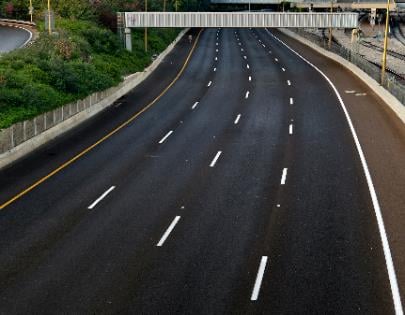
- Meaning: Denotes the center of a two-lane road or separates lanes on a multi-lane road, allowing safe overtaking and lane changes when necessary.
- Implication: When overtaking or changing lanes, drivers may cross crossed white center lines. Exercise caution and yield to other vehicles when necessary.
5. Double White Center Lines
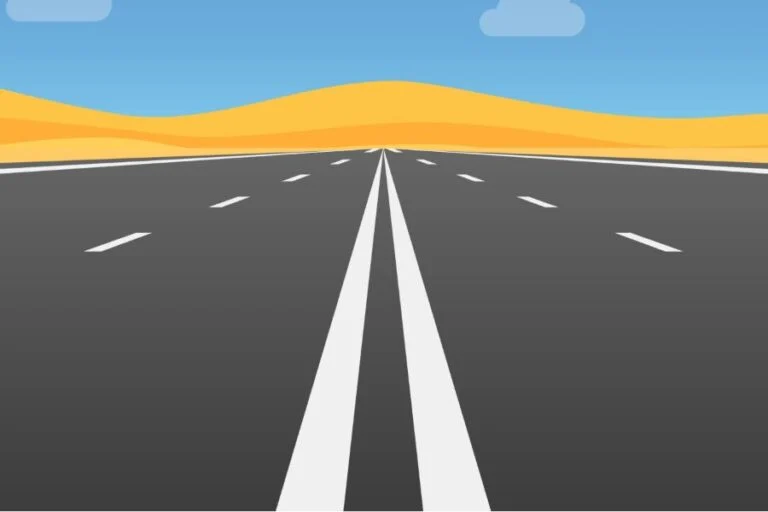
- Meaning: This symbol indicates an area where overtaking is prohibited. Turns to the left are permitted if the road is clear, but traffic coming from the opposite direction has the right of way.
- Implication: When making a left turn, drivers should exercise caution and refrain from overtaking across double white center lines.
6. Solid White Horizontal Line
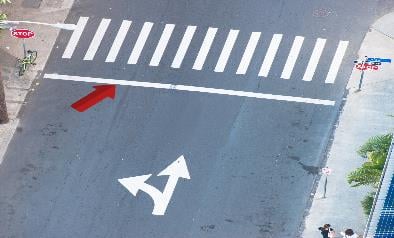
- Meaning: Provides a means of indicating traffic stops at intersections or traffic lights, ensuring orderly traffic flows.
- Implication: It is important for drivers to come to a complete stop behind solid white horizontal lines and proceed only when it is safe to do so.
7. Solid White Lane Divider
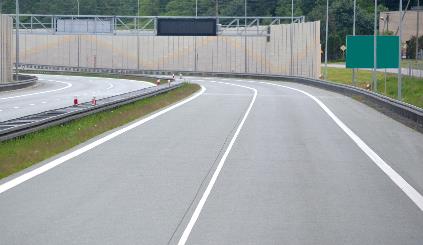
- Meaning: To remind drivers to stay within their lanes at intersections, especially when approaching them.
- Implication: To facilitate smooth traffic flow, drivers should be disciplined in their lane usage and utilize turning lanes appropriately.
Yellow Lines
A yellow line on the road indicates that there are restrictions or warnings for drivers. It is possible to mark no-passing zones, designate lanes for specific vehicles such as buses or bicycles, and warn motorists of potential hazards such as curves or intersections using these signs.
1. Double Yellow Center Lines

- Meaning: Indicates hazardous conditions where overtaking must be avoided at all times.
- Implication: Especially in areas with limited visibility or fast-moving traffic, drivers should avoid overtaking over double yellow center lines.
2. Solid Yellow Lane Divider
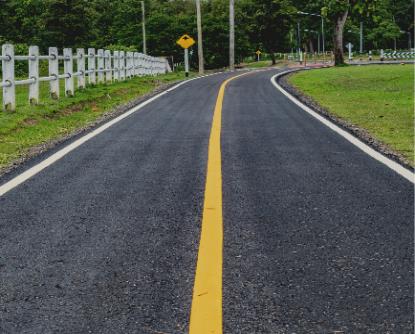
- Meaning: Delineates bus lanes or bicycle lanes with restricted access to vehicles designated in these lanes.
- Implication: In order to maintain traffic safety and comply with traffic rules, private vehicles should refrain from entering bus lanes or bicycle lanes.
3. Broken Yellow Lane Divider
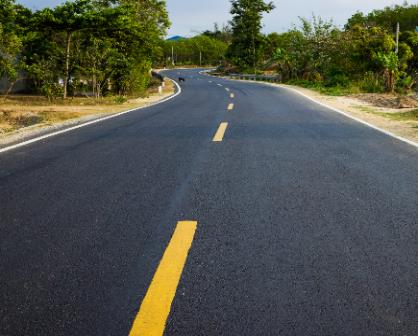
- Meaning: Provides vehicles with the opportunity to merge into bus lanes or prepare to turn off major roads.
- Implication: Drivers should exercise caution when merging into bus lanes and yield to buses when necessary.
4. Yellow Box
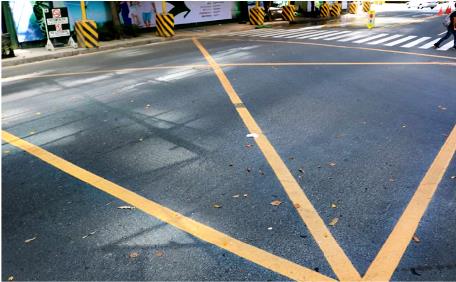
- Meaning: Indicates intersections that must be kept clear at all times in order to facilitate traffic flow.
- Implication: Motorists should avoid entering yellow boxes unless they can completely clear the intersection, in order to prevent traffic congestion and ensure that the flow of traffic is smooth.
Other Lines, Signs, and Symbols
There are also other lines on the road that serve a variety of purposes, such as guiding traffic flow, identifying parking or loading areas, and highlighting pedestrian crossings, which ensures efficient utilization of the roadway.
1. Mixed Center Line with Broken White Line
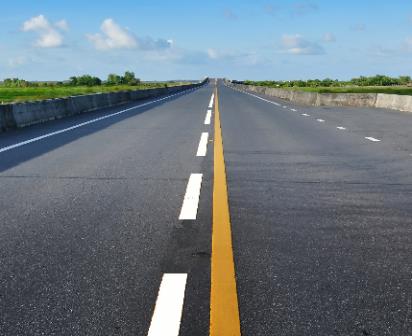
- Meaning: The broken line indicates that overtaking is allowed from one side while the solid line indicates that overtaking is restricted from the other side.
- Implication: Drivers should only overtake from the side indicated by the broken line, keeping clear visibility and yielding to traffic on the other side.
2. Directional Lane Arrows
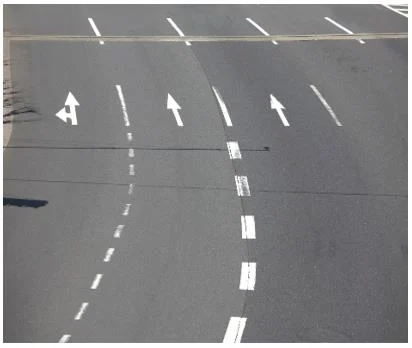
- Meaning: Provides guidance on proper lane usage and turning maneuvers to motorists by indicating permissible directions of travel within lanes.
- Implication: For a driver to adhere to traffic regulations and avoid violations, they must follow the directions on directional arrows.
3. Broken Blue Lane Divider
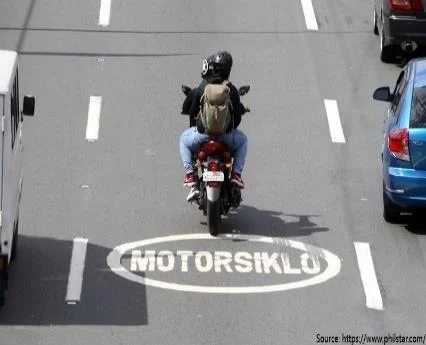
- Meaning: These lanes are specifically reserved for motorcycles, thereby promoting safety during motorcycling travel.
- Implication: Motorcyclists should adhere to designated motorcycle lanes and yield to drivers when using these lanes.
4. Mixed Double Lane Divider

- Meaning: A restriction on lane changes from one side while allowing merging from the other.
- Implication: When transitioning between roads or lanes, drivers should pay attention to lane restrictions and merge safely.
5. Rumble Strips
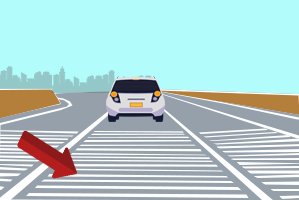
- Meaning: Provides drivers with warnings about hazards such as sharp curves and merging traffic so that they can reduce their speed and exercise caution.
- Implication: It is important for drivers to heed the warnings provided by rumble strips and adjust their speed accordingly in order to avoid accidents.
6. Zebra Crossing
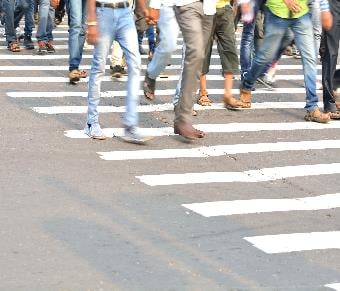
- Meaning: Designates pedestrian crossings as pedestrian crossing zones, requiring drivers to yield to pedestrians and refrain from stopping at the crossings.
- Implication: It is important for drivers to stop behind zebra crossings in order to allow pedestrians to cross safely and avoid traffic violations.
7. Cat’s Eyes
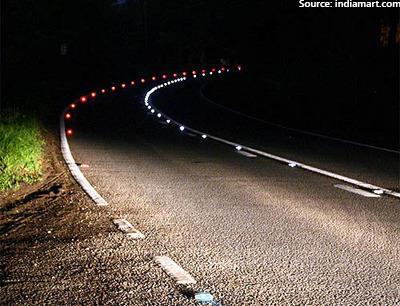
- Meaning: Raised pavement markers are generally embedded in the roadway surface and are designed to enhance nighttime driving visibility by reflecting headlights.
- Implication: Cat’s eyes function as visual guidance and warning systems for drivers, especially in areas with low lights, poor visibility, or adverse weather conditions.
8. Parking Bay
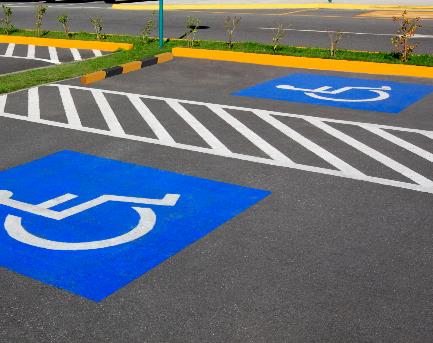
- Meaning: A space designated for parking is designated.
- Implication: Provides information regarding areas in which vehicles are permitted to park, thus facilitating organized parking and reducing congestion.
9. Loading and Unloading Bay Lane Line
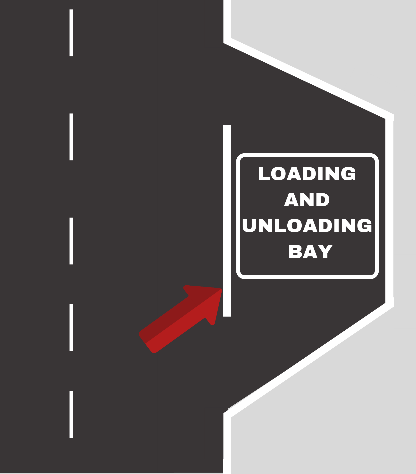
- Meaning: Describes the location and schedule of public utility vehicles loading and unloading zones, which typically have parking restrictions in place.
- Implication: Ensures efficient loading and unloading operations while minimizing disruptions to surrounding traffic.
10. Speed limit at 60KPH
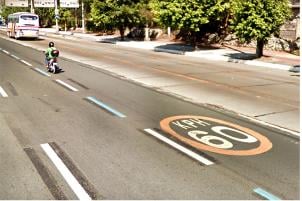
- Meaning: The pavement markings accompany the speed limit signs posted along the roadside, indicating a maximum speed of 60 kilometers per hour.
- Implication: These markings provide a visual indication of the speed limit, which contributes to the enforcement of traffic regulations, the promotion of safe driving practices, and the reduction of accidents caused by excessive speeds.
Mixed Center Line with Broken Yellow or White Line
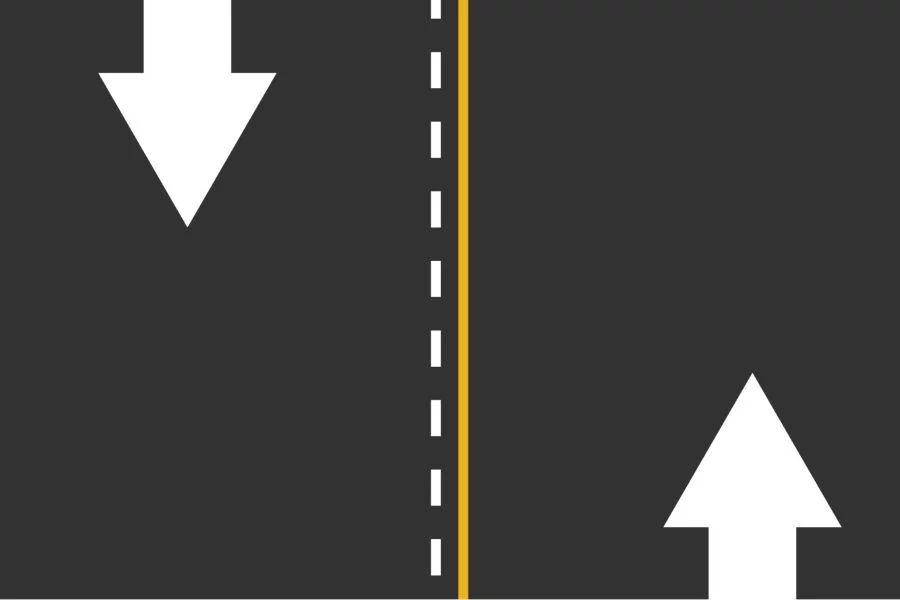
- Often, this type of line can be seen on curves that are dangerous or merging intersections. With this type of marking, drivers can overtake from either side of the broken line, but only from the side on which it runs.
White Lane Divider
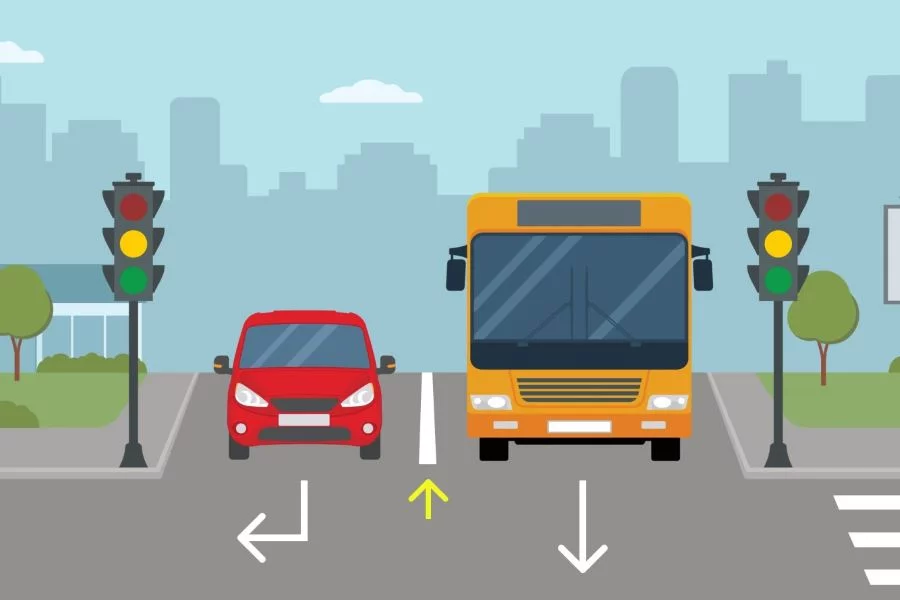
- The solid white lane dividers that can usually be found before intersections indicate that drivers are no longer able to change lanes. In this type of line, drivers are reminded to keep the arrows indicated on their lane and to stay within their lane.
Broken Blue Lane
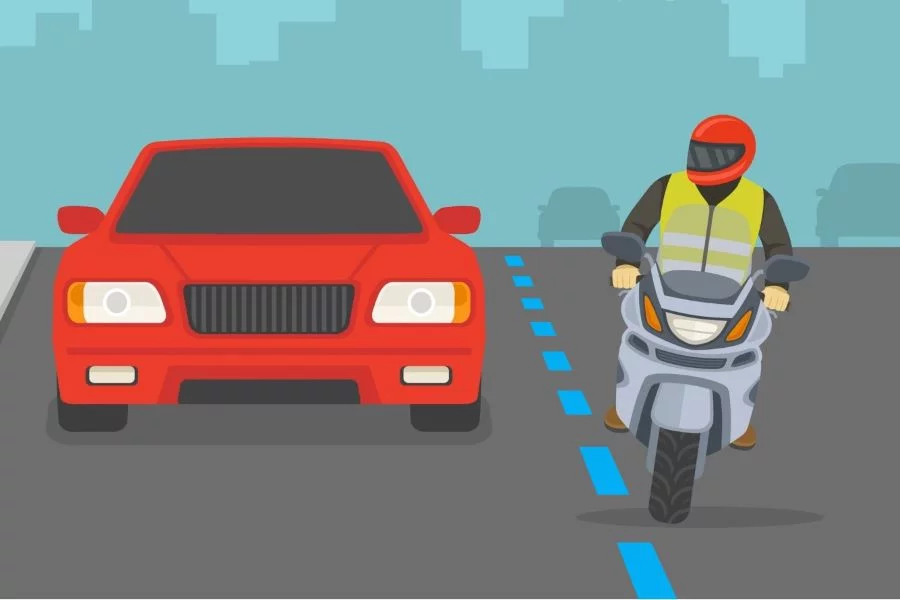
- A motorbike line indicates that a major road is intended for motorbikes. It is still possible for vehicles to maneuver through this lane, but it is designed specifically for motorists.
Rumble Strips
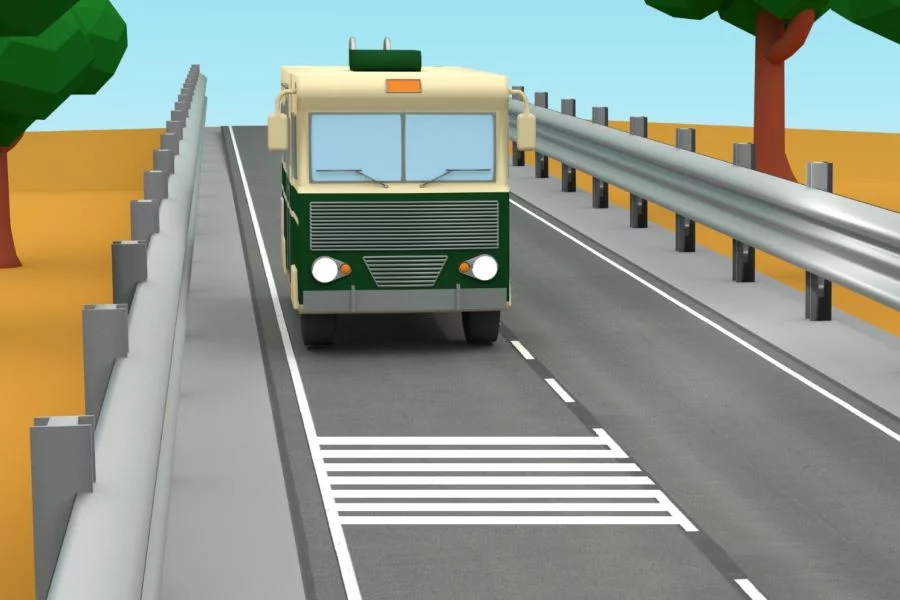
- It is important to note that the continuous horizontal lines are an indication of merging traffic, sharp curves, and potential hazards on the road ahead.
Pedestrian Crossing
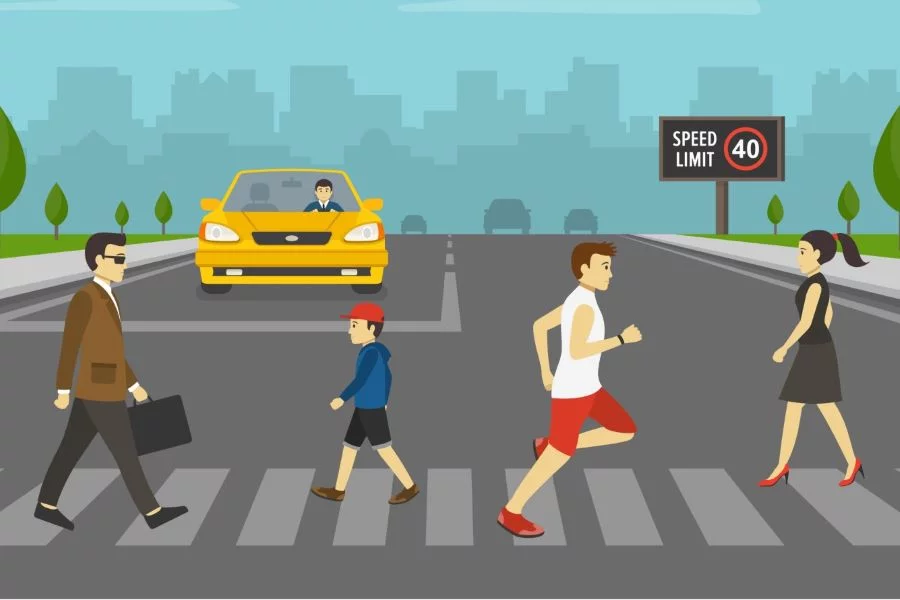
- Perhaps the most common road marking, the zebra or pedestrian crossing is commonly found in areas where people cross the street. It is common in the Philippines for road signs to be placed before this road marking to alert motorists to pedestrians ahead. The driver of a vehicle approaching this road marking must make a full stop and give way to pedestrians in order to ensure their safety.
Speed Limit
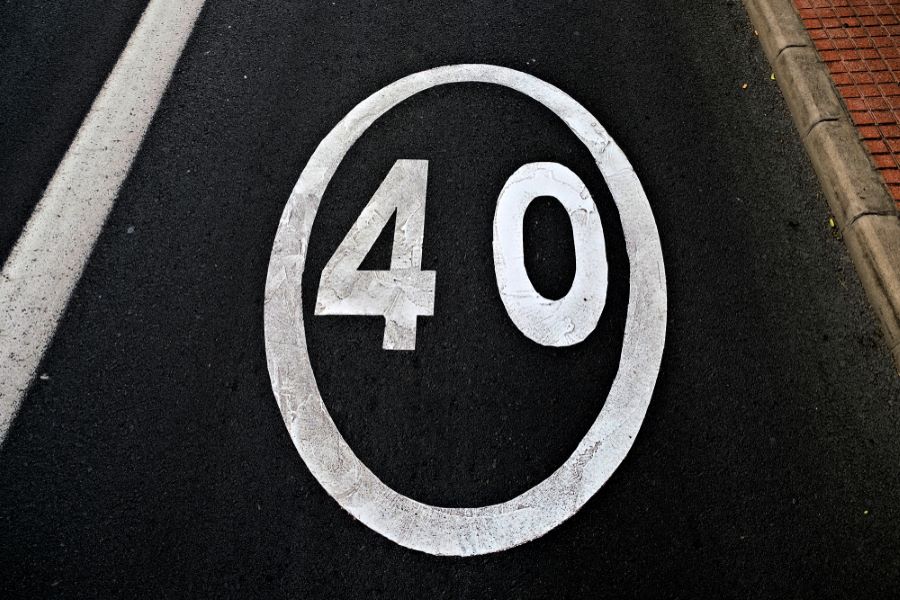
- The speed limit on national highways such as the EDSA is not only displayed on the signage, but it may also be written on the pavement as well. Markings on pavement that indicate the speed limit are helpful in reminding drivers to drive safely.
Standard Size for Road Marking Signs
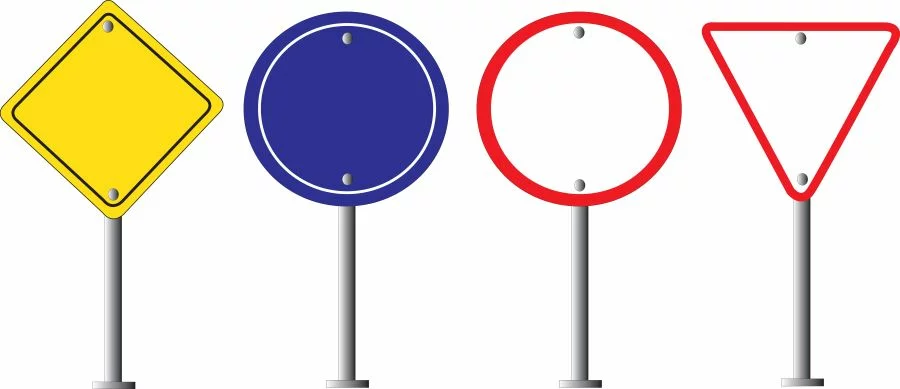
- Road marking signs on national roads are of a standard size in the Philippines in order to maintain uniformity across all roads.
Road Markings In The Philippines – Video Guide
Penalties
If you fail to follow road markings, you may be subject to the following penalties:
- For all violations of MMDA penalties, disregarding traffic signs (DTSs) or specific colored lines, except yellow bus lanes along EDSA, incurs a PHP 1,000 fine.
- Fines for reckless driving include the following:
- The first offense will result in a PHP 500 fine
- A second offense with a suspended license will result in a fine of PHP 750
- The third offense resulting in the loss of license will be punished by PHP 1,000
The consequences of illegal or unauthorized counterflow are as follows:
- For a first offense, the fine is PHP 2,000 plus a 3-month suspension of the license
- A second offense will result in a PHP 2,000 fine plus a 6-month suspension
- The third offense will result in a PHP 2,000 fine plus revocation of the license
Road Markings In The Philippines Details InPDF
Pedestrian Lanes
On national roads, two different widths are used for pedestrian lanes, which vary based on the maximum speed limit in these areas and whether the crossings are signalized or unsignalized.
The bars on all pedestrian lanes must have a consistent width between them. Signalized pedestrian crossings, however, require a minimum space of 4 to 8 meters between each solid white line.
Unsignalized Pedestrian Crossings:
- For speeds below 60 km/h, the pedestrian lane must be 300 mm wide and at least 4 meters long.
- For speeds above 60 km/h, the pedestrian lane must be 600 mm wide and at least 4 meters long.
Signalized Pedestrian Crossings:
- For speeds below 60 km/h, the solid white lines must be 150 mm wide.
- For speeds above 60 km/h, the solid white lines must be 300 mm wide.
FAQs About Road Markings in the Philippines
What is the purpose of road markings in the Philippines?
Ans: Road markings in the Philippines are essential for conveying important information to drivers and pedestrians. They guide traffic flow, prevent accidents, and ensure safe navigation by clearly indicating lanes, pedestrian crossings, hazards, and areas with special restrictions.
What are the different types of road markings commonly used in the Philippines?
Ans: The common road markings include longitudinal lines (lane dividers), traverse lines (intersection markings), object markings (hazard warnings), raised pavement markings (such as rumble strips), and pedestrian crossing markings like zebra crossings.
How do signalized and unsignalized pedestrian crossings differ?
Ans: Signalized pedestrian crossings require wider gaps between solid white lines, with a minimum of 4 to 8 meters. Unsignalized crossings have specific width requirements depending on the speed of traffic 300 mm for speeds below 60 km/h and 600 mm for higher speeds.
What is the penalty for ignoring road markings in the Philippines?
Ans: Failure to follow road markings can result in penalties, such as a PHP 1,000 fine for disregarding traffic signs. Violations like illegal counterflow or reckless driving can also lead to additional fines and license suspensions.
Why are certain roads marked with specific colors like yellow or white?
Ans: Yellow markings typically indicate restricted areas, such as no-passing zones or designated lanes for buses and bicycles. White markings are used for lane separation, pedestrian crossings, and traffic regulation, ensuring a safe driving environment for all road users.
Conclusion
In conclusion, road markings in the Philippines play a crucial role in enhancing road safety. By guiding drivers and pedestrians, these markings help regulate traffic flow, prevent accidents, and ensure that vehicles operate within the bounds of the law. Understanding and adhering to these markings is essential for everyone using the roads, ensuring a safer, smoother driving experience for all.



